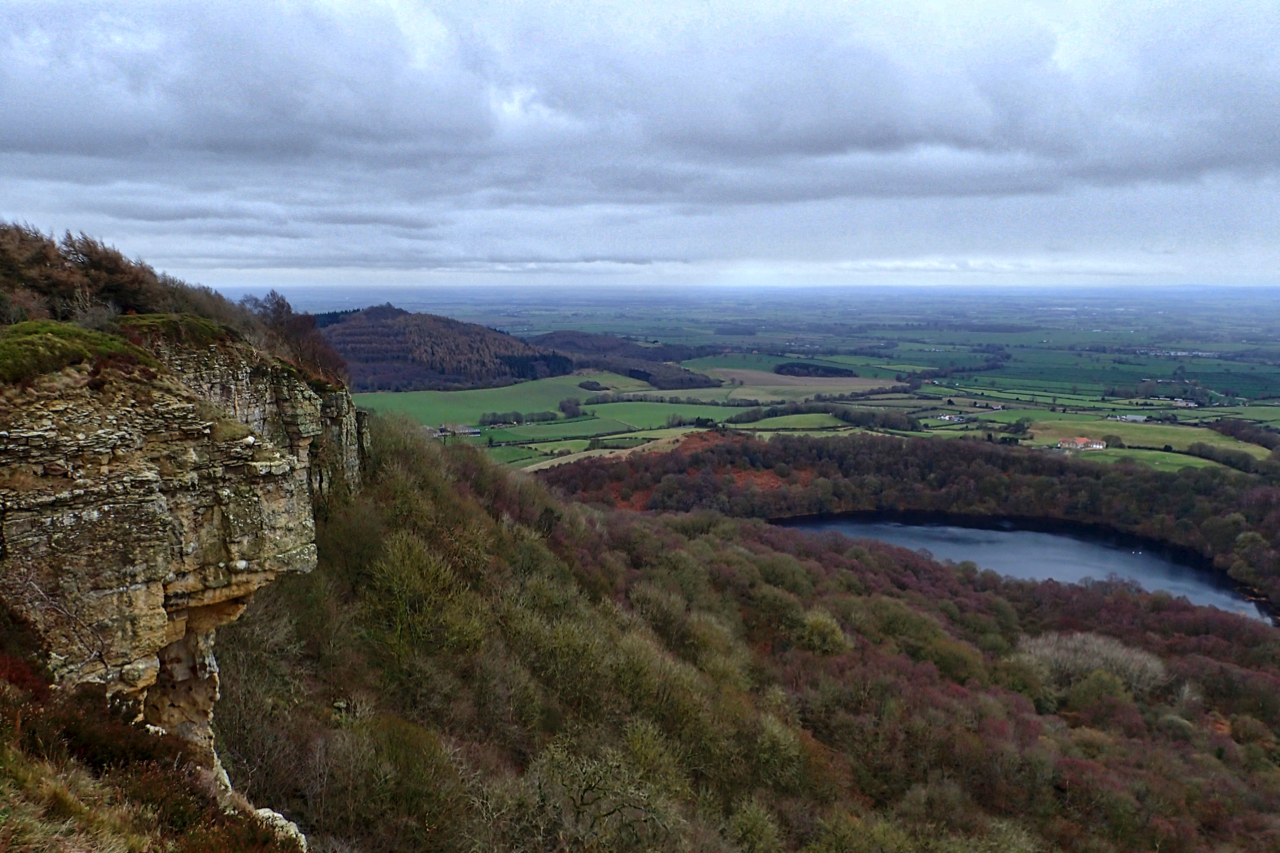Perhaps better known as Whitestone Cliff. The Calcareous Grit crag is supposed to have formed in the eighteen century when the steep scarp slope slumped, an occurrence recorded by the Rev. John Wesley, the Methodist preacher, in his journal:
“1755. On Thursday, March 25th, many persons observed a great noise near a ridge of mountains in Yorkshire, called Black Hamilton. It was observed chiefly in the south-west side of the mountain, about a mile from the course where the Hamilton races are run, near a ridge of rocks called Whiston Cliffs, or Whiston White Mare, two miles from Sutton, about five from Thirsk. The same noise was heard on Wednesday by all who went that way. On Thursday, about seven in the morning, Edward Abbott, weaver, and Adam Bosomworth, bleacher, both of Sutton, riding under Whiston Cliffs, heard a roaring as they termed it, like many cannons, or loud and roaring thunder. It seemed to come from the cliffs, looking up to which they saw a large body of stone, four or five yards broad, split and fly off from the very top of the rocks. They thought it strange, but rode on. Between ten and eleven a larger piece of rock, about 15 yards thick, 30 high, and between 60 and 70 broad, was torn off and thrown into the valley. About seven in the evening, one who was riding by observed the ground to shake exceedingly, and soon after several large stones or rocks, of some tons weight each, rose out of the ground, others were thrown on one side, others turned upside down, and many rolled over and over. Being a little surprised, and not very curious, he hastened on his way. On Friday and Saturday the ground continued to shake, and the rocks to roll over one another. The earth also clave asunder in very many places, and continued to do so until Sunday morning.”
160 metres below Lake Gormire is dark and moody. A lake with apparent no streams flowing in or out. Between is the steep slope of Yorkshire Wildlife Trust’s nature reserve, Garbutt Wood. It was grazed as wood-pasture until the early 1960s and was recorded in Tudor times. In the early days of the railways, sandstone was quarried from below cliff for use as sleepers.

Leave a Reply